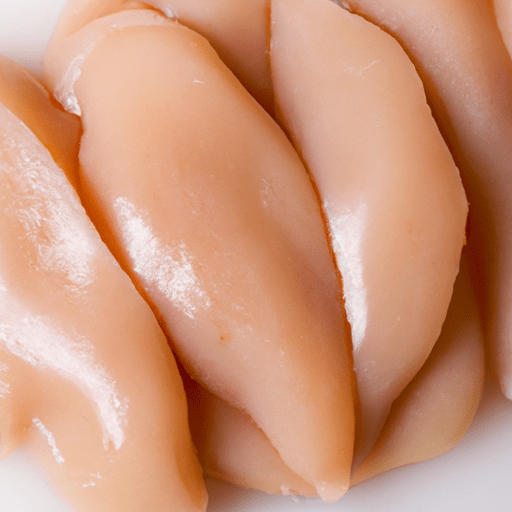Carved Chicken: Delicious, Nutritious, and Versatile
Carved chicken is a culinary delight that never fails to impress. The succulent meat, its mild and delicate flavor, and the countless ways it can be used in cooking make it a favorite among food enthusiasts. In this blog post, we will explore the taste, uses, nutritional value, and interesting facts about carved chicken.
Taste and Texture
Carved chicken boasts a tender and juicy texture that is incredibly versatile in the kitchen. The meat is mild in flavor, allowing it to effortlessly absorb a variety of seasonings, spices, and marinades. When carefully cooked, it practically melts in your mouth, resulting in a culinary delight that is sure to please even the pickiest of eaters.
Common Uses in Cooking
One of the reasons carved chicken is so beloved is its ability to be incorporated into numerous dishes. Whether being used as the star of a main course or as a complement to other ingredients, the possibilities are endless. Here are some common uses for carved chicken in the kitchen:
1. Salads
Carved chicken is a perfect addition to salads. Its subtle flavor and tender texture pair well with crisp greens, vegetables, and dressings. Whether in a classic Caesar salad or a vibrant Asian-inspired creation, the versatility of carved chicken shines through.
2. Sandwiches and Wraps
From the classic club sandwich to flavorful wraps, carved chicken adds a protein-packed and satisfying element to any handheld meal. Combined with fresh vegetables, spreads, or cheeses, it creates a delectable combination of flavors and textures.
3. Stir-Fries and Curries
The tender and juicy nature of carved chicken makes it an excellent choice for stir-fries or curries. It absorbs the flavors of the sauces and spices, elevating the overall dish. Its versatility allows it to be paired with an array of vegetables and seasonings, adding depth and balance to the final result.
4. Soups and Stews
When added to soups or stews, carved chicken imparts its savory essence, enhancing the overall taste and richness. Whether simmering in a comforting chicken noodle soup or a hearty winter stew, it adds an essential element to these beloved dishes.
Nutritional Value
Carved chicken is not only delicious but also a fantastic source of essential nutrients. It is low in fat, making it a healthier alternative to fattier meats. Additionally, chicken is an excellent source of high-quality protein, essential for muscle repair and growth. It also contains important vitamins and minerals such as vitamin B-6, vitamin B-12, zinc, and iron. As part of a balanced diet, carved chicken offers numerous health benefits and supports overall well-being.
Interesting Facts and History
- Chicken is one of the most widely consumed meats worldwide, with a long history dating back thousands of years.
- The domestication of chicken began in Asia over 4,000 years ago, with the bird’s popularity quickly spreading across continents.
- Roasting and carving chicken became popular in medieval Europe, and it remains a beloved tradition to this day.
- Carved chicken is a staple in many traditional cuisines, including American, Chinese, and Indian dishes.
- The practice of carving chicken for presentation purposes originated in 18th-century France, where intricate carving techniques were developed.
In conclusion, carved chicken is a culinary marvel that deserves its place in every kitchen. Its delicate taste, versatility in cooking, nutritional benefits, and rich history make it a go-to ingredient for countless recipes. So go ahead, get creative, and savor the splendor of carved chicken in your next culinary adventure!
Carved Chicken
Origin and Common Uses: Carved chicken refers to chicken meat that has been sliced into thin, neat pieces. It is a popular preparation method in numerous cuisines, including Chinese, American, and Mediterranean. The technique of carving chicken has been practiced for centuries in various cultures around the world.
Nutritional Benefits: Chicken is a valuable source of protein, providing essential amino acids necessary for building and repairing muscles. It is also a good source of vitamins and minerals, particularly vitamin B, iron, and zinc. Chicken, especially the white meat, is typically lower in fat compared to other meats like beef or pork, making it a popular choice for individuals watching their fat intake.
Unique Properties: Carved chicken is known for its versatility in cooking. It can be used in a variety of dishes, such as salads, sandwiches, wraps, stir-fries, and soups. Its tenderness and mild flavor make it a suitable ingredient for a wide range of recipes.
Historical Significance: The practice of carving chicken has ancient roots. In China, the art of carving chicken has been a part of culinary traditions for centuries, and it is often revered as a sign of skill and expertise. In some cultures, carved chicken is also a symbol of prosperity and good luck, particularly during important celebrations and festive occasions.
Culinary Techniques: Carving chicken requires precision and skill to create consistent and attractive slices. Chefs often use specialized carving knives that have thin and sharp blades, enabling them to obtain thin, even pieces. The technique of carving chicken involves strategic cutting along the bone structure to achieve desirable portions.
Popular Carved Chicken Dishes: Carved chicken is commonly used in various dishes, including:
Chicken Caesar Salad: Thin strips of carved chicken are often added to this classic salad, pairing well with the romaine lettuce, croutons, and Caesar dressing.
Chicken Sandwiches: Carved chicken is a popular protein choice for making sandwiches, either served cold or as part of a grilled or fried chicken sandwich.
Chicken Stir-Fries: Sliced chicken is frequently used in stir-fry dishes, quickly cooked with vegetables, sauces, and seasonings for a flavorful and nutritious meal.
Chicken Noodle Soup: Carved chicken is commonly included in chicken noodle soup recipes, providing tender and flavorful pieces of meat to the comforting broth and noodles.
Remember to always cook chicken thoroughly to ensure food safety and prevent any potential risks associated with undercooked poultry.




Use the share button below if you liked it.
It makes me smile, when I see it.